Let us look into the colour theory and mixing of colours. We cannot see light directly. We only see the light reflecting or refracting off objects. You are able to read this page but you cannot see the light falling on it. You can only see the light reflecting off the surface and reaching your eye. If you say that you can see a light beam in some context, it is only the light refracted through something like dust, moisture or smoke. It could also be due to the reflection of light from some surfaces.
Any object reflecting light does not give out all that falls on its surface. The surface absorbs some light. The colours you see are based upon the wavelength of light reflecting off an object while others are absorbed.
An object appears in Orange colour because it reflects yellow, orange and red colours while absorbing green, blue, indigo and violet.
The natural source of light is sun. The light emitted by sun is generated from the heat and hence sun is an incandescent source of light. Sun’s light includes all colours of the visible spectrum or VIBGYOR. This is what we see in a rainbow. When all of these colours combine together, we get the white colour or white light. From here we get the primary colours Red, Green and Blue. Combination of these colour in certain quantities produces the visible spectrum or VIBGYOR.
There are two types of Colour Mixing – Additive Mixing and Subtractive Mixing.
Additive mixing is the process in which the primary colours Red, Blue and Green are mixed to get various other colours. When these primary colours are mixed in equal ratio, we get the white colour. This is the most common forms of colour mixing for live performance (dance, stage shows etc).
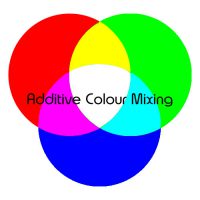
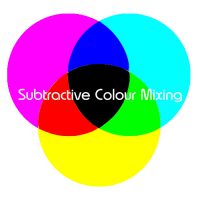
The White light that a human eye perceives is a phenomenon where our eyes see an even distribution of all colours of the visible spectrum. Subtractive Mixing is the process of filtering colours to produce different colours. This is explained as follows. The subtractive mixing is employed in many automated lighting systems.
A light bulb (emitting white light) emits all colours of the visible spectrum. Keep a Red Filter in front of the white light. The filter blocks (or absorbs) all colours other than red and therefore the light coming out of the filter is red. Here we are not turning the white light to red but we are removing all other colours which have wavelengths nearest to the wavelength of red colour. This is therefore the Subtractive Mixing process.
The secondary colors we get by mixing primary colours are Magenta, Cyan and Amber. Mixing the Primary and Secondary colours, we get all the colours in the visible spectrum.
Mixing Red and Green we get the Yellow colour.
Mixing Green and Blue we get Cyan colour.
Mixing Blue and Red we get Magenta.
Red, Green and Blue are Primary Colours for Additive Mixing. Cyan, Yellow and Magenta are the Primary Colours for the Subtractive Mixing. In additive mixing, addition of each colour, the resultant colour becomes brighter while in subtractive mixing, the addition of colour results in darker light. Hence mixing of Red, Green and Blue gives us white colour (brightest) in additive mixing. Mixing of Magenta, Cyan and Yellow gives us the black (darkest) colour in subtractive mixing. In subtractive mixing we are filtering out colours from the white light which is a combination of Red, Green and Blue.
When a Yellow (Red and Green) filter is placed in front of White light, it allows only the Red and Green lights to pass through it, filtering out the Blue colour. So, we see a Yellow light after filtration.
When Magenta (Blue and Red) filter is placed in front of the resultant Yellow light, the filter allows only Red light to pass through it, filtering out the Green.
When the Cyan (Green and Blue) filter is placed in front of the Red light, it does not have any colour to pass through and hence filters out the Red colour. So, in effect there is no light to come out of the Cyan filter and we see darkness. We all know Darkness (Black Colour) is the absence of light. We cannot produce black light.
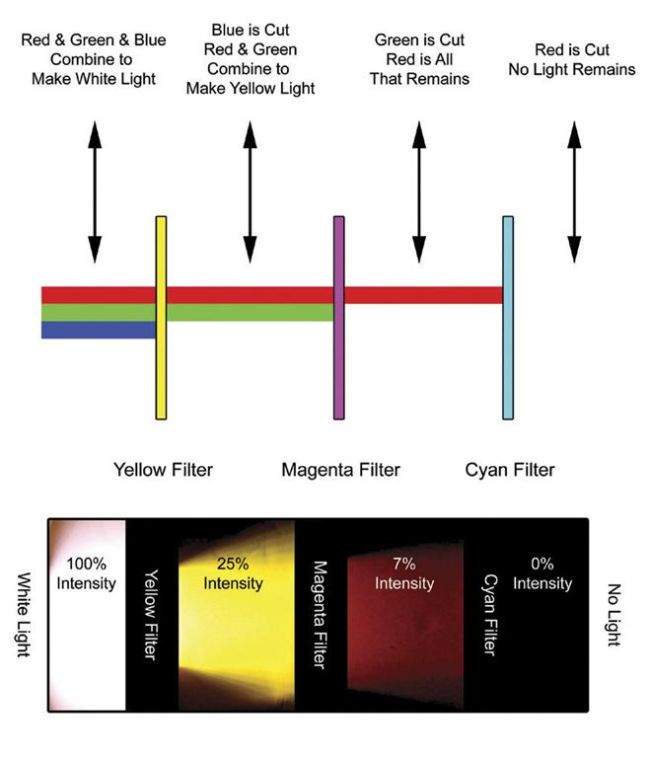
Picture Credit: Jay Holben
Pin if for later
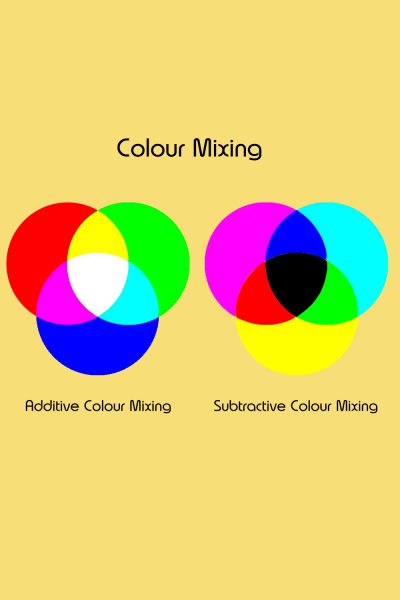
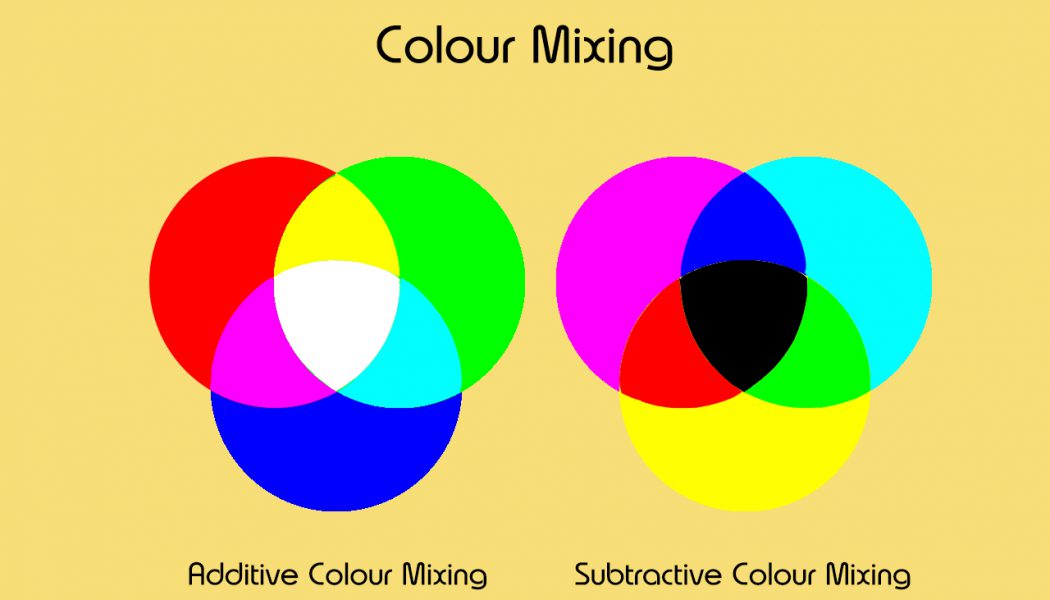
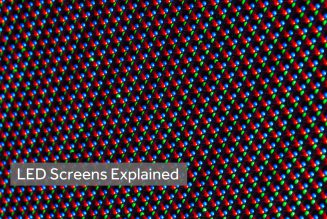
sharadpathane
Interesting